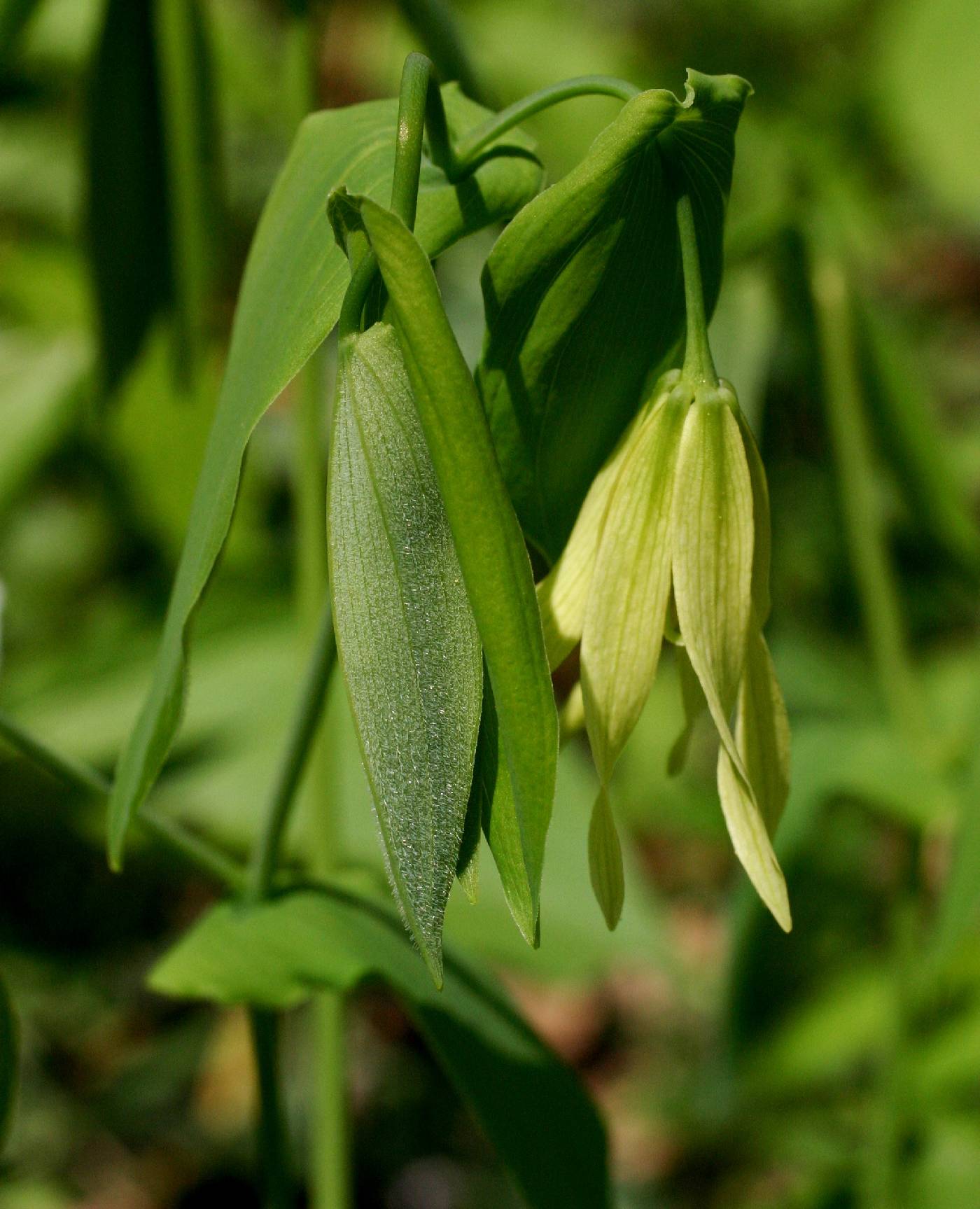Uvularia
|
Family: Colchicaceae |
Herbs, caulescent, glabrous or pubescent, from short or elongate rhizomes bearing several fibrous or thickened roots. Stems simple or 1-branched, excluding flower-bearing branches, strongly angled or rounded, with sheathing, papery bracts proximally. Leaves alternate, sessile or perfoliate; blade oblong-linear to oblong-ovate, membranaceous to leathery. Inflorescences 1 per branch, terminal but appearing axillary; peduncles pendent. Flowers: perianth narrowly campanulate; tepals promptly deciduous, imbricate, distinct, linear to narrowly oblong, apex obtuse or acute, nectariferous; stamens distinct to weakly connate at perianth base; filaments dimorphic, glabrous; anthers linear-oblong, extrorse; connectives present; ovary superior, 3-locular, sessile or stipitate, rounded to sharply triangular; style 1, 3-lobed; stigmas 3, lobed, outwardly arching at maturity. Fruits capsular, greenish to yellowish brown, sessile or stipitate, leathery or submembranaceous, tardily dehiscent, dehiscence loculicidal. Seeds 1-3 per locule, brownish red, globose to ovoid; arils various. x = 6, 7. Uvularia, a genus of attractive, spring-blooming plants, has been divided into sect. Oakesiella (Small) Wilbur with sessile leaves and sect. Uvularia with perfoliate leaves. Differences in other morphological (R. L. Wilbur 1963) and cytological (F. H. Utech 1978d) characters support recognition of these infrageneric groups. D. K. Wijesinghe and D. F. Whigham (1997, 2001) compared the different, below-ground, vegetative morphologies of three Uvularia species and their relationship to their differing clonal populations and dynamics.
Fls perfect; tep 6, elongate, distinct; stamens 6; filaments short; anthers elongate-linear, extrorse, longitudinally dehiscent; ovary shallowly 3- lobed, with several ovules per locule; styles separate or united to beyond the middle; capsule loculicidal, obovoid and 3-lobed or 3-winged; seeds subglobose; herbs from a slender rhizome, the erect stem forked above the middle, the lower part bearing a few bladeless sheaths and 0-4 lvs; lvs sessile or perfoliate, reaching full size after anthesis; fls stramineous to yellow or greenish- yellow, nodding, terminal but appearing axillary by prolongation of the branches. 5, N. Amer Gleason, Henry A. & Cronquist, Arthur J. 1991. Manual of vascular plants of northeastern United States and adjacent Canada. lxxv + 910 pp. ©The New York Botanical Garden. All rights reserved. Used by permission. |

